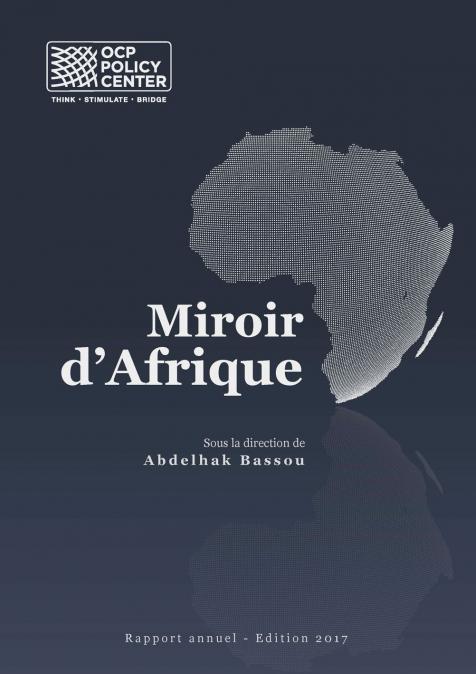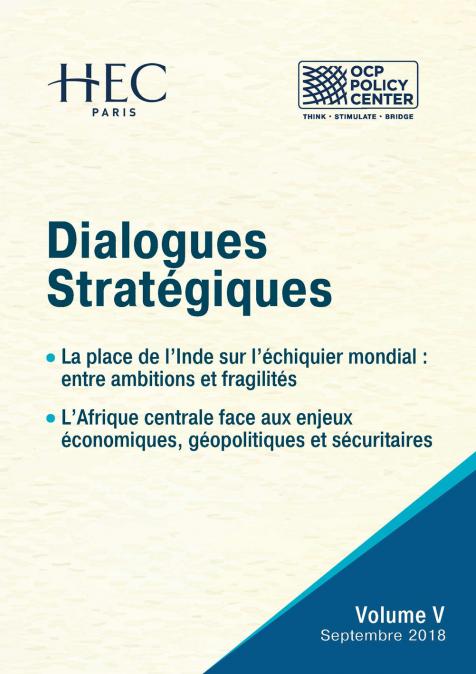RELATED CONTENT
-
Isabelle TsakokOctober 18, 2018In this podcast, we take a closer look at an issue, which in numerous different ways, influences agricultural development around the world. The topic in question is land tenure security. ...
-
 AuthorsOctober 15, 2018Usually the gray colored drones take off from Dirkou in Northeastern Niger between ten at night and four in the morning. There are no signs of blinking lights, neither on the runway nor on the flying machines, signaling their presence. Niger’s interior minister Mohamed Bazoum pretends not to know about secret operations on a small commercial airport in his country’s desert region -“all I know is that they are American” (Penney et al, 2018). To be precise, we're talking about drones ...
AuthorsOctober 15, 2018Usually the gray colored drones take off from Dirkou in Northeastern Niger between ten at night and four in the morning. There are no signs of blinking lights, neither on the runway nor on the flying machines, signaling their presence. Niger’s interior minister Mohamed Bazoum pretends not to know about secret operations on a small commercial airport in his country’s desert region -“all I know is that they are American” (Penney et al, 2018). To be precise, we're talking about drones ... -
Alain AntilOctober 12, 2018Dans ce podcast avec Alain Antil, chercheur et responsable du Centre Afrique subsaharienne de l'Ifri, l’auteur expose les défis fonciers dans les espaces ruraux africains. Qu’il s’agisse ...
-
 AuthorsSous la direction deLassina DiarraTaoufik MarrakchiRahima MoominJoana Osei-TutuHassane SaoudiMadu Fatchou SanguehOctober 11, 2018En parcourant le sommaire de cet ouvrage, et plus encore en prenant connaissance de son contenu, le lecteur réalise qu’il s’agit bel et bien d’un miroir du continent africain. La diversité des plumes renvoie à une large palette de thématiques sur lesquelles les auteurs, académiciens, experts et autres praticiens, livrent leurs analyses. Le tout, pour un décryptage le plus pointu possible de la dynamique qui traverse l’Afrique et des tendances qui s’y dessinent. Nous ne sommes que t ...
AuthorsSous la direction deLassina DiarraTaoufik MarrakchiRahima MoominJoana Osei-TutuHassane SaoudiMadu Fatchou SanguehOctober 11, 2018En parcourant le sommaire de cet ouvrage, et plus encore en prenant connaissance de son contenu, le lecteur réalise qu’il s’agit bel et bien d’un miroir du continent africain. La diversité des plumes renvoie à une large palette de thématiques sur lesquelles les auteurs, académiciens, experts et autres praticiens, livrent leurs analyses. Le tout, pour un décryptage le plus pointu possible de la dynamique qui traverse l’Afrique et des tendances qui s’y dessinent. Nous ne sommes que t ... -
 AuthorsSabine CessouOctober 10, 2018La seconde thématique des Dialogues stratégiques, dont la 6ème édition s’est tenue le 4 octobre 2018 à Paris, a porté sur les réformes en cours au sein de l’organisation panafricaine. La rencontre est d’abord revenue sur le contexte global dans lequel opère l’Union africaine (UA). La géopolitique en Afrique n’est pas seulement menée par les ex-puissances coloniales et la Chine, mais bien par les pays africains eux-mêmes, a ainsi rappelé l’ancien ministre français des Affaires étran ...
AuthorsSabine CessouOctober 10, 2018La seconde thématique des Dialogues stratégiques, dont la 6ème édition s’est tenue le 4 octobre 2018 à Paris, a porté sur les réformes en cours au sein de l’organisation panafricaine. La rencontre est d’abord revenue sur le contexte global dans lequel opère l’Union africaine (UA). La géopolitique en Afrique n’est pas seulement menée par les ex-puissances coloniales et la Chine, mais bien par les pays africains eux-mêmes, a ainsi rappelé l’ancien ministre français des Affaires étran ... -
 AuthorsOctober 10, 2018“Teach a parrot the terms ‘supply and demand’ and you’ve got an economist.” That parrot can explain to us what is happening with commodity prices (Chart 1, left side). That is, while agricultural and industrial metal prices - particularly copper - plummeted on average by over 10% since June, energy prices - especially oil - have risen nearly 20% since the beginning of the year. Brent's barrel price is now triple what it was in early 2016. Check the latest World Bank Commodities Pric ...
AuthorsOctober 10, 2018“Teach a parrot the terms ‘supply and demand’ and you’ve got an economist.” That parrot can explain to us what is happening with commodity prices (Chart 1, left side). That is, while agricultural and industrial metal prices - particularly copper - plummeted on average by over 10% since June, energy prices - especially oil - have risen nearly 20% since the beginning of the year. Brent's barrel price is now triple what it was in early 2016. Check the latest World Bank Commodities Pric ... -
 AuthorsSabine CessouOctober 8, 2018« Amérique latine, crises et sorties de crises », telle était la première des deux thématiques des 6èmes Dialogues stratégiques, organisés le 4 avril par HEC Paris (Centre de géopolitique) et OCP Policy Center. Un tableau mitigé a été dressé, avec des signes de reprise et une croissance supérieure à 2 % qui n’empêchent pas des situations de crise comme au Brésil, au Nicaragua ou au Vénézuela. Crise d’un modèle d’oligarchies anti-capitalistes Au Vénézuela, la corruption paraît si e ...
AuthorsSabine CessouOctober 8, 2018« Amérique latine, crises et sorties de crises », telle était la première des deux thématiques des 6èmes Dialogues stratégiques, organisés le 4 avril par HEC Paris (Centre de géopolitique) et OCP Policy Center. Un tableau mitigé a été dressé, avec des signes de reprise et une croissance supérieure à 2 % qui n’empêchent pas des situations de crise comme au Brésil, au Nicaragua ou au Vénézuela. Crise d’un modèle d’oligarchies anti-capitalistes Au Vénézuela, la corruption paraît si e ... -
 AuthorsManfred HafnerSimone TagliapietraLucia de StrasserOctober 4, 2018This blog post summarizes the key findings of the new book Energy in Africa: Challenges and Opportunities, co-authored by Manfred Hafner, Simone Tagliapietra and Lucia de Strasser of the Italian think-tank, Fondazione Eni Enrico Mattei. The book, published by Springer, is freely available online. The book presents a picture of the current energy challenges on the African continent- the Sub-Saharan region in particular- and proposes pathways to an accelerated energy transition. Begi ...
AuthorsManfred HafnerSimone TagliapietraLucia de StrasserOctober 4, 2018This blog post summarizes the key findings of the new book Energy in Africa: Challenges and Opportunities, co-authored by Manfred Hafner, Simone Tagliapietra and Lucia de Strasser of the Italian think-tank, Fondazione Eni Enrico Mattei. The book, published by Springer, is freely available online. The book presents a picture of the current energy challenges on the African continent- the Sub-Saharan region in particular- and proposes pathways to an accelerated energy transition. Begi ... -
 AuthorsPascal ChaigneauJérôme EvrardThierry GarcinJacques GravereauxMoubarack LoRodolphe MonnetFlorent ParmentierOctober 4, 2018Les Dialogues Stratégiques, une collaboration entre HEC Center for Geopolitics et OCP Policy Center, représentent une plateforme d’analyse et d’échange biannuelle réunissant des experts, des praticiens, des décideurs politiques, ainsi que le monde universitaire et les médias au service d'une réflexion critique et approfondie sur les tendances politiques mondiales et les grandes questions d’importance commune pour l’Europe et l’Afrique. Cette publication est issue de la 5ème édition ...
AuthorsPascal ChaigneauJérôme EvrardThierry GarcinJacques GravereauxMoubarack LoRodolphe MonnetFlorent ParmentierOctober 4, 2018Les Dialogues Stratégiques, une collaboration entre HEC Center for Geopolitics et OCP Policy Center, représentent une plateforme d’analyse et d’échange biannuelle réunissant des experts, des praticiens, des décideurs politiques, ainsi que le monde universitaire et les médias au service d'une réflexion critique et approfondie sur les tendances politiques mondiales et les grandes questions d’importance commune pour l’Europe et l’Afrique. Cette publication est issue de la 5ème édition ... -
 AuthorsOctober 3, 2018TEARS OF JOY CHANGED INTO THOSE OF PAIN January 28, 1986. It was just another day in the whirlpool of news and speculations of a new Foreign Correspondent to be assigned to the White House. Shivering on his way to the most important political center of the Western World, resisting arctic cold and snow on the way to work, hardly ever seeing the President himself. Instead, he found himself on this fateful day in a rendez-vous with Tom Foley, majority leader in the House of Representa ...
AuthorsOctober 3, 2018TEARS OF JOY CHANGED INTO THOSE OF PAIN January 28, 1986. It was just another day in the whirlpool of news and speculations of a new Foreign Correspondent to be assigned to the White House. Shivering on his way to the most important political center of the Western World, resisting arctic cold and snow on the way to work, hardly ever seeing the President himself. Instead, he found himself on this fateful day in a rendez-vous with Tom Foley, majority leader in the House of Representa ...



